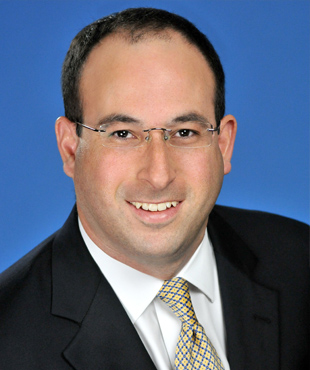Frank Cruz-Alvarez is a Partner with Shook, Hardy & Bacon L.L.P. in the firm’s Miami, FL office, and Britta Stamps Todd is an Associate in the firm’s Kansas City, Mo office. Mr. Cruz-Alvarez is the WLF Legal Pulse’s Featured Expert Contributor on Civil Justice/Class Actions.
*****
What began as a patent litigation case spurred an antitrust case and ended with the Fourth Circuit’s latest reversal of class certification in In re Zetia (Ezetimibe) Antitrust Litigation. Luckily, no expertise in pharmaceutical patent litigation or antitrust law is required to break down the court’s clarification of Federal Rule of Civil Procedure 23’s numerosity requirement. In short, Merck developed a cholesterol-lowering drug that it patented and marketed under the name Zetia, with its patent giving Merck the exclusive right to develop the drug through April 2017. In 2006, another pharmaceutical company, Glenmark, sought FDA approval to market a generic version of Zetia on the basis that Merck’s patent was invalid. Merck promptly sued Glenmark for patent infringement, and the two companies eventually settled the case with an agreement that Glenmark could launch its generic version of the drug in December 2016. Alleging violations of federal antitrust law, the plaintiffs in the present case sued both Merck and Glenmark on behalf of a putative class that included drug wholesalers who purchased Zetia directly from Merck.
But the list of drug wholesalers who purchased Zetia directly from Merck and therefore comprised the putative class only includes thirty-five entities. Still, the three class representatives moved for class certification. Following the recommendation of a magistrate judge, the district court granted class certification under Rule 23(b)(3). As relevant to the numerosity requirement of Rule 23(a), the district court looked to the Third Circuit’s “non-exhaustive list” of factors, including “judicial economy, the claimants’ ability and motivation to litigate as joined plaintiffs, the financial resources of class members, [and] the geographic dispersion of class members.” In re Modafinil Antitrust Litig., 837 F.3d 238, 253 (3d Cir. 2016). Reasoning that multiple individual trials would be required unless the class was certified, the district court concluded that the numerosity requirement had been met, along with the other Rule 23(a) requirements, and certified the class.
Pointing to the low number of class members, all of which were sophisticated business entities, Merck and Glenmark appealed the certification decision to the Fourth Circuit. While no specific number of putative class members has been defined as a threshold for meeting Rule 23(a)’s numerosity requirement, courts have generally held that fewer than 20 putative class members is insufficient, but more than 40 members generally qualifies. The 35 putative class members in the present case fall squarely in the “gray area” between 20 and 40 members, requiring the district court to take into consideration the totality of the circumstances of the particular case to determine whether joinder of the putative class members is impracticable.
The district court’s rationale diverged from Rule 23’s actual language in its interpretation of the word “impracticable.” Adopting the magistrate judge’s reasoning, the district court concluded that judicial economy would be best served by class certification to avoid “multiple individual trials” involving “the same theories of liability and largely the same evidence.” The Fourth Circuit went so far as to agree that compared to joinder, “class certification will often be preferable from a judicial economy perspective.” But that does not equate to joinder being impracticable. Reminding district courts that Rule 23(a) is a “high standard,” the court reiterated that the balance of factors must make “joinder not only uneconomical but also economically impracticable.”
Again focusing on the economics of individual suits, the district court further found that class certification was warranted given “evidence from other cases regarding class members’ motivation to pursue claims on their own.” But the plaintiffs offered no evidence that it would be uneconomical for the smaller claimants to individually join a traditional suit. The Fourth Circuit clarified that whether some claimants may be economically unmotivated to pursue a claim via joinder is only one of many factors to be considered for numerosity. The focus must be on the impracticability of joinder, not the impracticability of individual suits. Because the district court concentrated its attention on the challenges of individual suits rather than the practicability of the 35 putative class members being joined in one traditional lawsuit, the Fourth Circuit reversed and remanded for the district court to decide the case with its fresh guidance in mind. The 35 putative class members may very well satisfy the numerosity requirement on remand, but the district court must consider the impracticability of joinder in its rationale for certification.
Writing separately in a concurring opinion, Judge Niemeyer offered additional practical measures of numerosity. He advised that a class with fewer than 30 members “should be exceptional.” Expanding on the “geographic dispersion” factor considered by some courts, he reasoned that if putative class members are “especially scattered” or “notably concentrated,” this factor should be afforded extra weight. And where putative class members may refrain from joining a traditional lawsuit out of fear of possible reprisals by the defendant, the individual class members’ motivation should be heavily considered. The concurrence also looked at the judicial economy factor from a granular perspective: courtroom space and correlated staffing concerns increase when 35 plaintiffs each have 2 or 3 attorneys in the courtroom to litigate a traditional lawsuit, compared to a few attorneys representing the entire class in a class action. Finally, Judge Niemeyer cautions against consideration of sunk costs of discovery that has already been completed—while future discovery may be considered as a factor, a class should not be certified simply because the putative class’s counsel has already conducted voluminous discovery.
While Merck and Glenmark also appealed other aspects of the class certification decision, the Fourth Circuit quickly rejected the remaining points of adequacy of class representatives and predominance. Although the Fourth Circuit only referenced antitrust standing in passing in its brief discussion of Rule 23(b)(3)’s predominance inquiry, antitrust standing can also bear on Rule 23(a)’s numerosity requirement. In addition to traditional Article III standing, private antitrust plaintiffs must establish antitrust standing as well. This creates an additional hurdle for class representatives trying to meet the magic number to achieve numerosity. In conjunction with the wave of cases in various federal circuits about class members’ standing, antitrust defendants should consider any possible challenges to a plaintiff’s antitrust standing to attack both numerosity and predominance in opposition to class certification.


